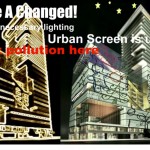Tsim Sha Tsui: “P&L InTrans” People and Light Inter-Transformation Project
Authors. CHOI Pik Ying Camilla, LAM Winkey, MEHTA Aarushi
The issue that the group has chosen to address is the severe light pollution problem in the Yau Tsim Mong District along with the district’s increasing population density. We aim to turn both of these pressing issues in our neighbourhood into potentials for bringing positive effects to the district, to make it more sustainable. Our project addresses how the light pollution issue can be minimised without sacrificing the economic benefits of lights used for advertising.
According to Friends of Earth, between 1997 and 2005, Hong Kong’s population grew by 4.9%, while the per capita electricity consumption in lighting grew by a disproportionate 10%. These astonishing figures represented an over-consumption of energy, creating excessive pollution and light nuisances. In one of their surveys, it also showed that 19.1% of interviewees who lived in the Yau Tsim Mong district claimed that they were most affected by the light billboards.
Some estimates hold that you can produce up to 11,000 watt-hours of power every day just through normal bodily functions, which are three times the watt-hours of energy that we are likely to consume. The Defense Advanced Research Projects Agency (DARPA) also estimates that a human footstep can provides 1 to 2 watts of energy. Therefore, Pavegen tiles are specially manufactured tiles to capture physical human energy for other uses. It helps to convert kinetic energy of the people visiting shopping malls stepping on the tiles into electrical energy, which can either be stored or directly utilized. The power generated has various uses, for instance, lights and lighting decorations, speakers, alarms or charging and storing a battery.
If Urban/LED screens were installed on the exterior walls of malls, and they would give a fun and artistic presentation to the walls of the shopping malls replacing the traditional advertisement signs, therefore creating uniquely outstanding impressions to the public. This would turn the light pollution into something enjoyable, which reduces the disturbance of the light billboards to the residents in the region and the public.


